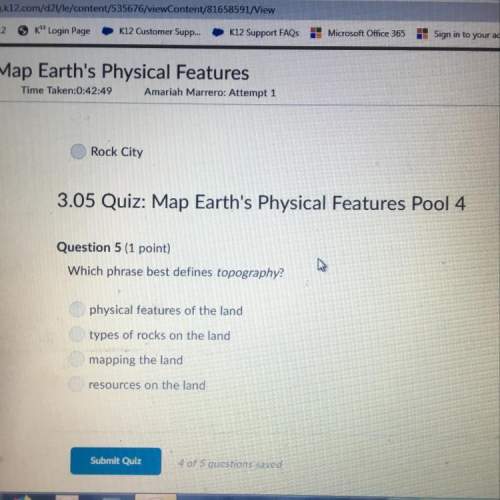
Chemistry, 09.07.2019 16:00 putaprincess16
Be sure to answer all parts. thallium(i) is oxidized by cerium(iv) as follows: tl+(aq) + 2ce4+(aq) → tl3+(aq) + 2ce3+(aq) the elementary steps, in the presence of aqueous mn(ii), are as follows: step 1: ce4+ + mn2+ → ce3+ + mn3+ step 2: ce4+ + mn3+ → ce3+ + mn4+ step 3: tl+ + mn4+ → tl3+ + mn2+ the rate law is given by the equation: rate = k[ce4+][mn2+] identify the catalyst: tl+ tl3+ ce3+ ce4+ mn2+ mn3+ mn4+ identify the intermediates: tl+ tl3+ ce3+ ce4+ mn2+ mn3+ mn4+ identify the rate-determining step

Answers: 1


Other questions on the subject: Chemistry


Chemistry, 22.06.2019 22:30, wpatskiteh7203
Draw the aromatic compound toluene (methylbenzene). show all hydrogen atoms, including those on the ring.
Answers: 1

Chemistry, 23.06.2019 00:00, kittenalexis68
How many atoms or molecules are there in a mole of a substance?
Answers: 1

Chemistry, 23.06.2019 00:30, quintink
How can you write e method for the experiment of separating sand from water by filtration process? 1-materials 2-steps 3-conclusion also the same for the separating process of water and salt by filtration or distillation. quick because i need to finish my hw
Answers: 2
You know the right answer?
Be sure to answer all parts. thallium(i) is oxidized by cerium(iv) as follows: tl+(aq) + 2ce4+(aq)...
Questions in other subjects:

Chemistry, 18.03.2021 23:00

Mathematics, 18.03.2021 23:00





Mathematics, 18.03.2021 23:00







